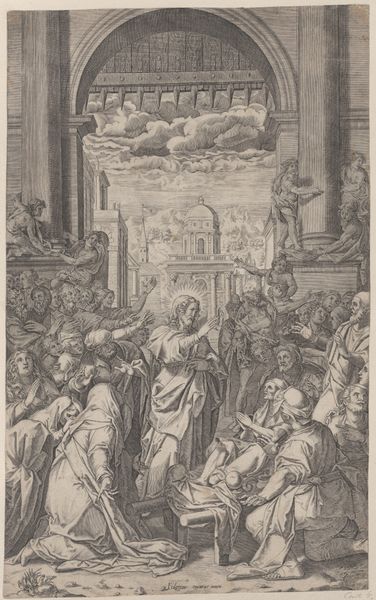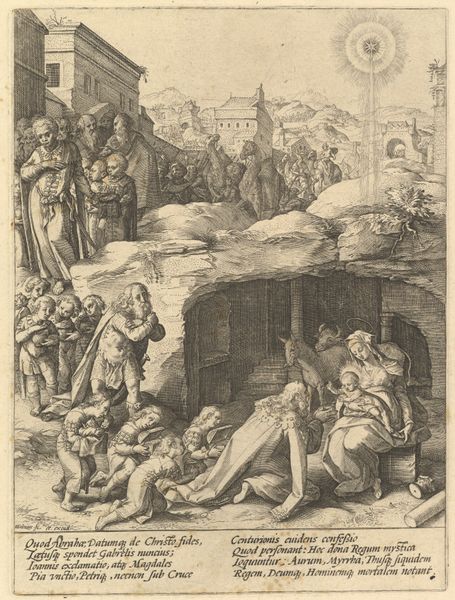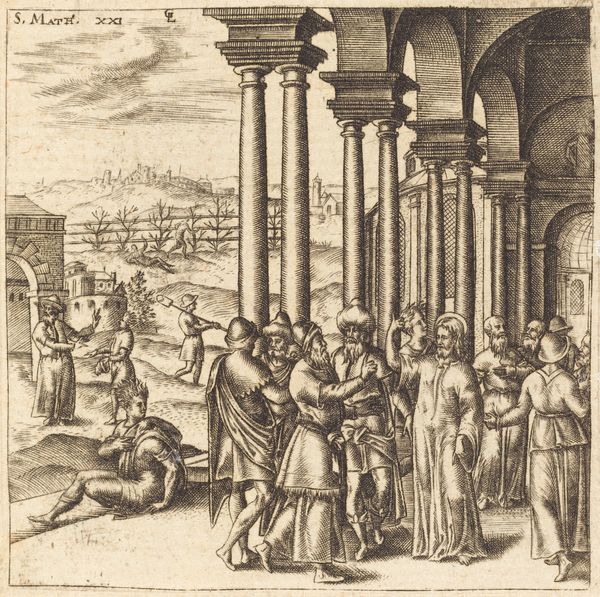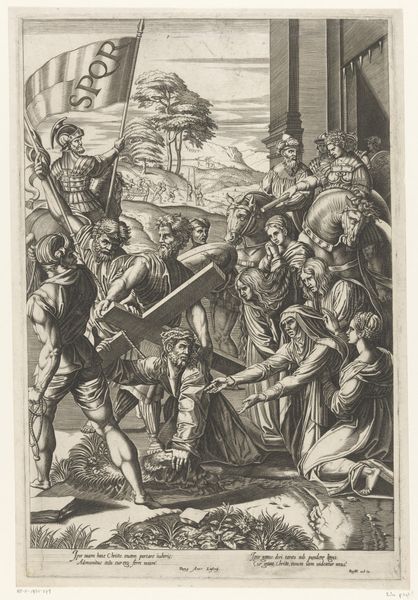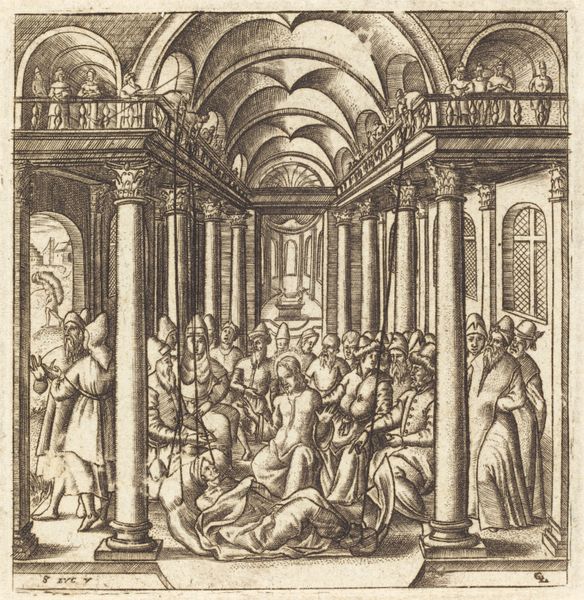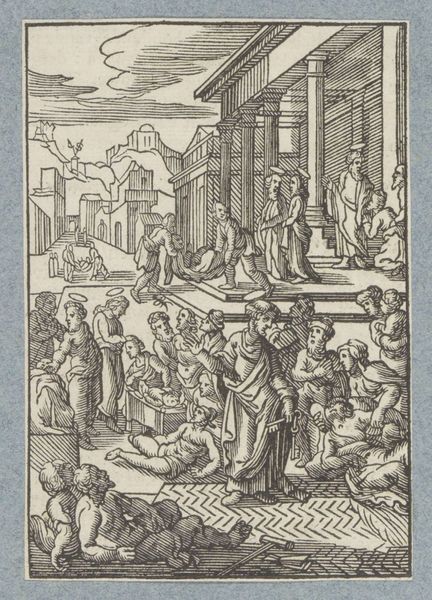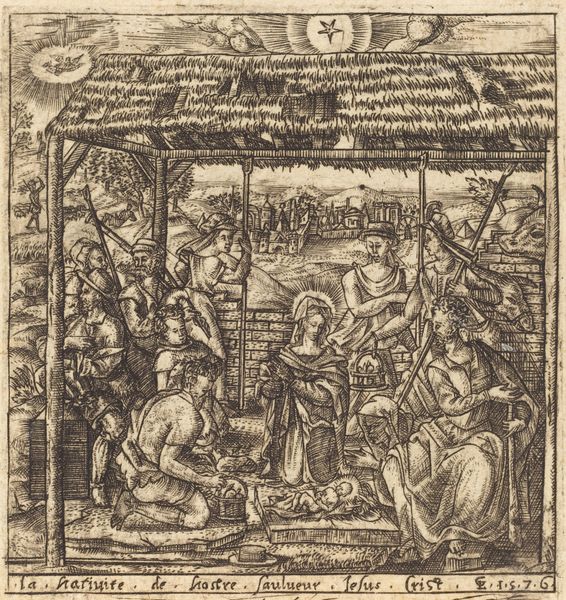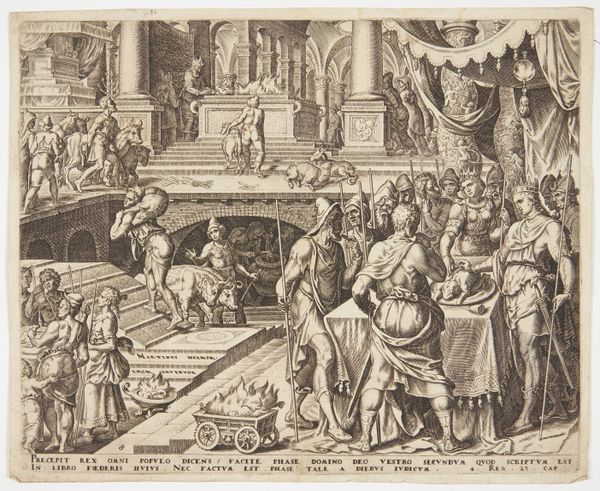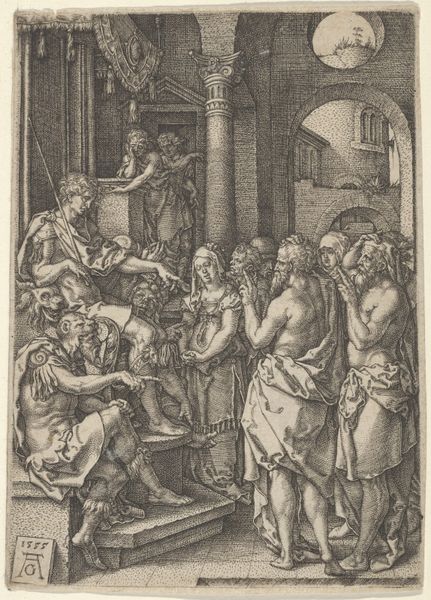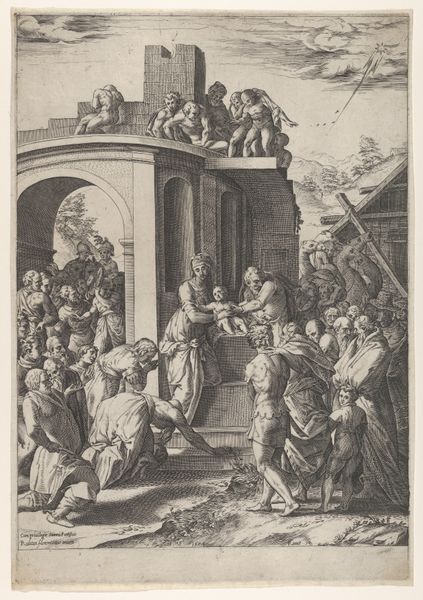
The Parables of the Lost Sheep, the Woman with Pieces of Silver and the Prodigal Son c. 1576 - 1580
0:00
0:00
print, engraving
#
narrative-art
# print
#
figuration
#
11_renaissance
#
line
#
cityscape
#
history-painting
#
engraving
Copyright: National Gallery of Art: CC0 1.0
Léonard Gaultier created this engraving, "The Parables of the Lost Sheep, the Woman with Pieces of Silver and the Prodigal Son," sometime between the late 16th and early 17th centuries. It visualizes three well-known stories from the Gospel of Luke. Made in France during a period of religious conflict, this print reflects the visual culture of the Catholic Reformation. Note how the artist presents the parables not as simple stories, but as lessons taught within a complex, contemporary urban landscape. Consider the architecture, dress, and social interactions depicted. How do these details make the biblical stories relatable to a 17th-century audience? How might the image function as a form of religious instruction or persuasion? To further explore the social and cultural context of this engraving, we can look at historical sources such as religious pamphlets, architectural plans, and costume books. Such resources provide invaluable insights into the values, beliefs, and material culture of the time, allowing us to better understand the public role of art.
Comments
No comments
Be the first to comment and join the conversation on the ultimate creative platform.
